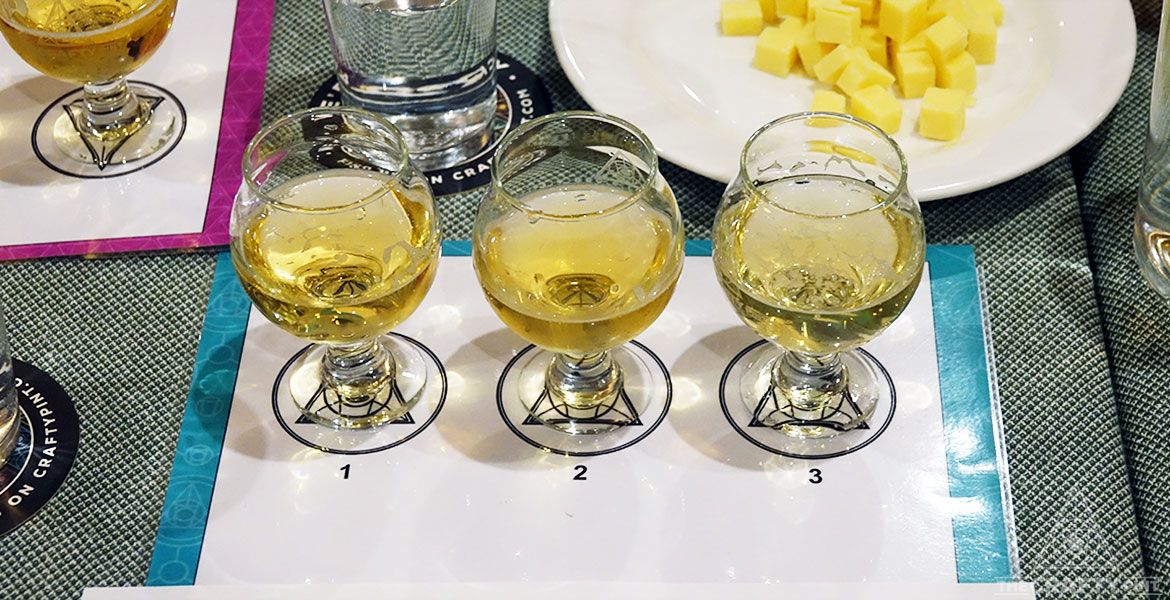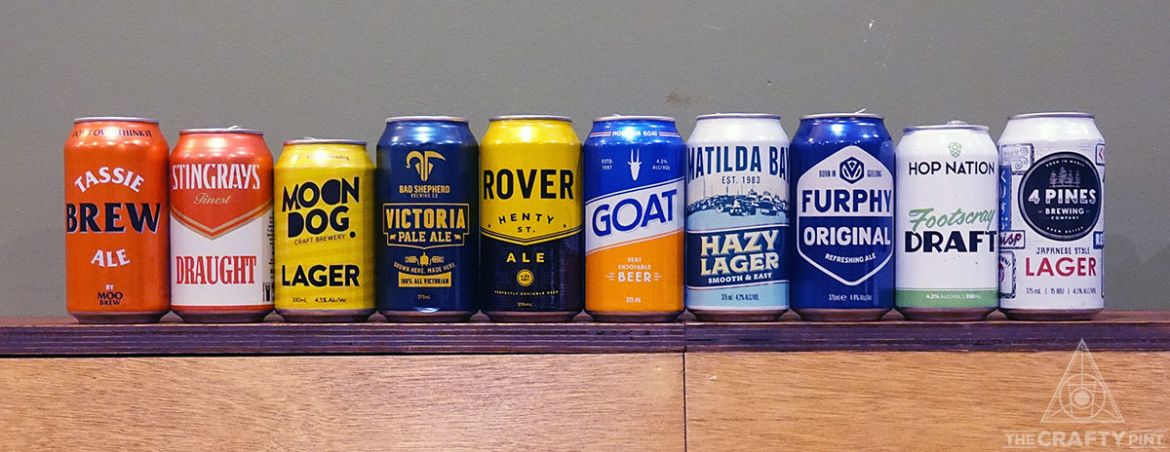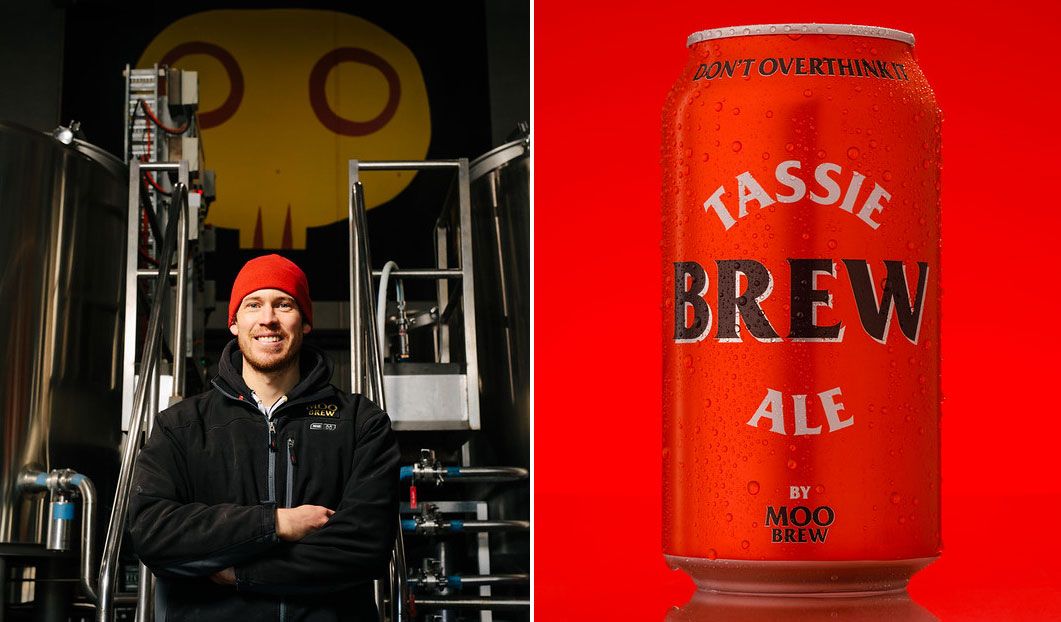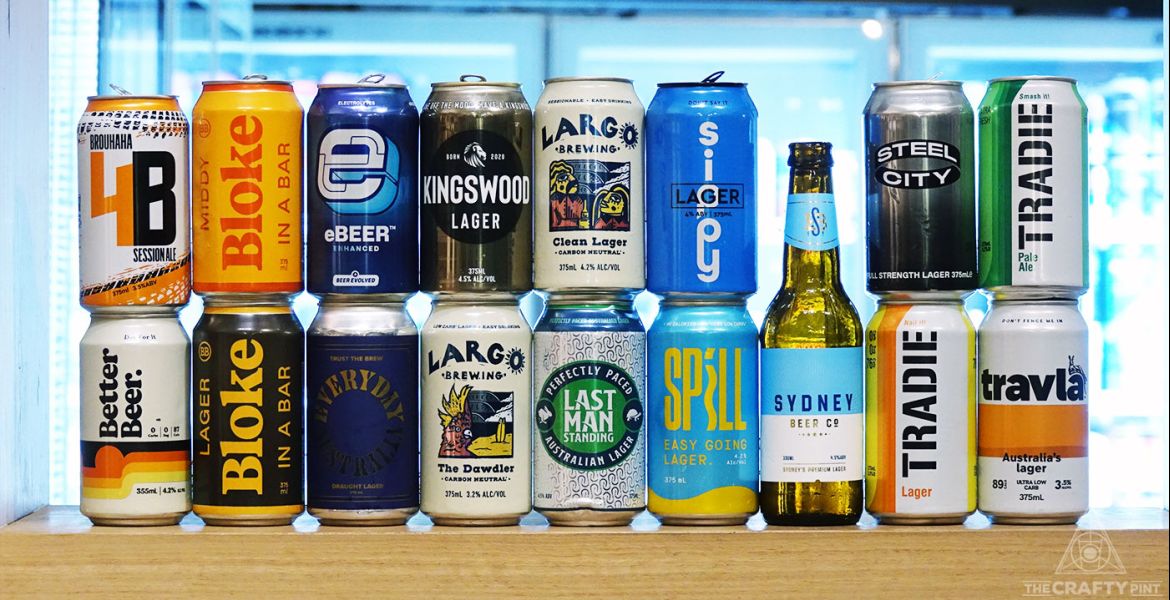It's been a while since we last convened a blind tasting panel, but with the new-look Crafty Pint launched last week we have a little more time to dedicate to such endeavours. They've always been among the most popular articles over the decade or so we've been running them, and here we've gone for something a little different to our usual style-based selection.
The arrival of crafty beers for those on a tight budget, or looking to balance their fondness for the odd expensive tallboy tinnie or wax-sealed 750ml bottle, predates the current economic downturn. Yet the cost-of-living crisis has certainly seen more breweries weigh up whether it's a path they could or should follow.
When we issued our shout-out for such beers earlier in the month, we went with the term "Fridge Fillers", but have since decided that "Budget Busters" is more appropriate as this was targeting a very specific price point: $60 or less for a case of 24 beers; sub-$50 for smaller cases.
There are certainly other beers out there that share a similar vibe to those we put to the test – we had a few of them put forward by those who spotted a social post or saw the "Fridge Fillers" headline but missed the parameters laid out in the article. So, if you have a favourite go-to beer in keeping with the lagers, "draught" beers, and lower ABV hoppy ales below and it's not there, it's most likely down to price point.
Readers familiar with these blind tastings will know how they operate; for first-timers, they're our version of the judging panels carried out for beer competitions like the AIBAs, Indies or homebrew competitions – but with the odd tweak.
We invite a panel of knowledgeable beer people from across the industry – for this one we had one of our writers alongside brewers, beer reps and a marketing specialist – and present the beers in flights, inviting the panelists to assess the beers for appearance, aroma, flavour and structure.
We also include one additional scoring column called "Overall" which helps account for the fact we're not handing out medals or trophies, but instead writing for a broad audience of beer drinkers. This allows judges to mark higher if the beer isn't to style but is still one they'd like to drink, and vice-versa.
Of course, "style" wasn't so much an issue with this tasting. The beers that met the brief were a mixture of lagers and ales of varying types. By their nature, much of the skill in their creation comes down to balancing the need to keep costs down with the need for the end result to be appealing to drinkers looking for something craftier than the country's dominant lager brands.
So, trusting in the decades of knowledge and experience gathered around the judging table, we provided them with enough information to know where each flight sat within the spectrum of styles, but not enough to give away what any of the beers might be. And where did that lead us...?
The Tasting

Before we get to the top ten, it's worth noting a couple of points. One thing that stood out was just how many of these beers were from Victorian breweries or Victorian-based craft brands now owned by one of the country's two major brewing companies. We scoured the country for beers that met the brief, and included some from WA, Tasmania and New South Wales, yet the vast majority were from Victoria.
Is this because the price wars in the local beer world have been going on longer in that state, or is it a case of more brewers there looking to get ahead of the curve at a time of tightening purse strings? Whatever the reason, their dominance, at least by weight of numbers, was stark.
When we came to tallying the judge's scores, it was also noticeable just how few points separated many of the beers. Just six points out of a maximum 150 on offer covered the beers in second and seventh place. That said, the beer that came out on top was as clear a winner as I can recall in any of our blind tastings.
It was also interesting to note how the upper echelons featured a diversity of styles; you might have wondered whether the most explicitly hop-forward beers would rule the roost, yet there's lagers and a kolsch up there too. Furthermore, many of the beers come from breweries' offshoot labels, or sub-brands, rather than displaying the parent brewery's name or logo front and centre.
We took the decision to only feature one beer from each brewery, even if they had more than one within the parameters, for example the Rovers range from Hawkers or the Moo Brew and Bodriggy offshoots.
Before we get to the results, it's also worth mentioning something we've tried to hammer home in past blind tastings: the need to check the date stamps on beers when you're out shopping.
While some of the beers in this lineup were provided by the brewers after they spotted our call for submissions, a few were purchased (as indicated below). And it was eye-opening just how many cans or bottles or six-packs you might have to turn upside-down or hold to the light to find beers with a decent period until they hit their best before date. You'd always check the date on a bottle of milk, so if you're after fresh beer, do the same.
Anyway, drum roll... Let's get to the top ten!
The Top Ten

Congratulations to Moo Brew, whose Tassie Ale – released under the BREW banner alongside the Tassie Lager, was a clear winner. What with Tasmanian brewers conspicuous by their absence in every Hottest 100 Aussie Craft Beer poll for at least a decade, we're glad to have helped shine a light on the good things happening in the south!
And, given this is a tasting in which economies of scale are arguably a bigger factor than any prior blind tasting we've held, congrats to indie brewers too: they account for five of the top six beers.
1 Moo Brew BREW Tassie Ale (4.3%)
From brewery; best before date 27/4/24
2 Bodriggy Stingrays Draught (4.5%)
From Blackhearts & Sparrows, Brunswick; BBF 25/5/24
3 Moon Dog Lager (4.5%)
From brewery; BBF 26/4/24
4 Bad Shepherd Victoria Pale Ale (4.2%)
From brewery; BBF 11/7/24
5= Hawkers Rover Henty St Ale (4.3%) –
From brewery; BBF 11/7/24
5= Mountain Goat GOAT (4.2%)
From Dan Murphy's, Alphington; BBF 13/4/24
7 Matilda Bay Hazy Lager (4.2%)
From Dan Murphy's, Alphington; BBF 31/12/23
8 Furphy Original (4.4%)
From Dan Murphy's, Alphington; BBF 2/12/23
9 Hop Nation Footscray Draft (4.5%)
From brewery; BBF 14/7/24
10 4 Pines Japanese Style Lager (4.5%)
Sample; BBF 21/4/24
The other beers to feature in the tasting were, in alphabetical order: Brick Lane Draught (4.9%) – Dan's; BBF 27/4/24; Deeds Brewing Pre-Game Pale (4.2%) – Carwyn Cellars; BBF 23/5/24; Gage Roads Alby Draught (4.2%) – Copper & Oak; BBF 10/5/23*; James Squire 150 Lashes (4.2%) – Dan's; BBF 30/11/23; Nail Brewing Quokka Export (4.1%) – Copper & Oak; BBF 21/2/24.
*We discovered the bottles we'd purchased online were past their best before date too late to arrange fresher samples.
Behind The Beers
It goes without saying that it's not easy to brew a beer that will appeal to those seeking something a little craftier while hitting such a tight price point and ensuring the beer is financially viable. We chatted to the people behind the top two beers to find out why and how they do just that.

Finding out one of your beers has performed well in any competition is always going to be welcome, but for Moo head brewer Jack Viney, the news their Tassie Ale had claimed top spot was particularly rewarding.
"It's pretty close to my heart. I really believe in it," he told The Crafty Pint when informed of the outcome. "I've always thought it's a beer that's going to go well."
He describes it as sitting somewhere between an Aussie pale ale and an easygoing XPA. It's brewed with Galaxy and Vic Secret hops, including "a little dry-hop", with the aim being to offer some fruity hop character but not so much it might put off the everyday drinkers they hope to win over. As such, when developing the recipe, it wasn't merely a case of keeping the cost of goods down: the brewers might prefer one of the hoppier trials, but are they the target market?
The Hobart-based brewery launched the BREW sub-brand with Lager in January 2021, which was joined by Ale the following summer. As with most things associated with Moo and Mona, the museum upon which the original brewery sat, there's an element of tongue-in-cheek: Lager's blue cans reference the brewery that's long ruled over the south of the state; the red is a nod to their rival in the north.
There were plenty of factors that went into their creation too, among them a desire to get Moo Brew beers into more people's hands – on both sides of the bar or bottleshop counter.
"We wanted them to be a gateway beer," Jack says, the sort of beer where drinkers might pick up a slab "rather than a can out of a six-pack, or a six-pack if you're lucky.
"It's great to buy a lot of different beers but it doesn't help breweries trying to be a production brand."
And, ever since they moved from the original brewery to the current site in Bridgewater, that's what they've been – even if they now have a 300-litre brewpub kit to play with at Manky Sally's, their venue in Salamanca. Thus, the arrival of BREW gave their sales team an extra in at pubs or bottleshops that wouldn't typically look at the rest of their range, and people like Jack an in with mates who might baulk at a more full-flavoured pale ale.
"You can go to your non-craft-drinking mates and hopefully get them across to drinking more craft-driven beers," he says. "It's happened: I've had mates now ask me to bring a carton of Pale. They're teetering on the edges, but we're getting them there!"
Of course, making a beer with crafty credentials that sells at $60 for 24 cans and still makes profit for the brewery is a challenge – not least if you're based in Tasmania and bringing most of your ingredients across the Bass Strait, even more so if you plan to play on the mainland and need to send the finished product the other way too. Yet their success in finding the sweet spot – Lager is "cranking" and is now their best-seller – has helped too. For example, increasing production helped justify the purchase of another malt silo, which has helped reduce costs.
"You've just got to make sure you do [beers like these] properly," Jack says, "and for the right reasons."

The Stingrays line from Melbourne-based Bodriggy is another sub-brand that's home to more than one beer. The Draught that came second in our tasting was joined by an XPA earlier in 2023.
Brewery co-owner Pete Walsh says: "The reason we started another brand was we believed it gave us a more diverse offering and it also meant we didn’t crowd tap lists or shelves. We looked at our portfolio and ran a few different scenarios, one of which was just having eight to ten Bodriggy beers ranging all different styles. The other was to tag in another brand that’s quite different to Bodriggy and range the less crazy beers through the second brand.
"With the second option, it felt like each beer had a more refined place in our portfolio."
While Bodriggy's beers often stray into – or should that be "make a beeline for" – the outer realms of beer, at least with their limited releases, Stingrays is a different, simpler beast. Pete describes it as "a gritty brand", one with newcomers to craft in mind.
"Affordability was always a priority and we did manage to keep Stingrays relatively cheap," he says, even if inflation and the rising cost of pretty much everything has had an impact. "That has been a constant battle and recently, after all our materials went up, we did a price rise on Stingrays."
As for the sub-brand approach, he says there are pros and cons. Where there's the risk of diluting the brand or causing some confusion among customers, producing both Bodriggy and Stingrays beers increases their chances of finding an audience, and of snagging more tap points.
"We're much more likely to get two taps next to each other with a Bodriggy – Stingray combination," Pete says. "Having a diverse offering across the taps is important for most bars and having two brands means we could offer that."
Thanks to Miss Moses for allowing us to use their upstairs bar for the blind tasting, and to the panelists who gave up an evening of their time to sample all the beers.


















